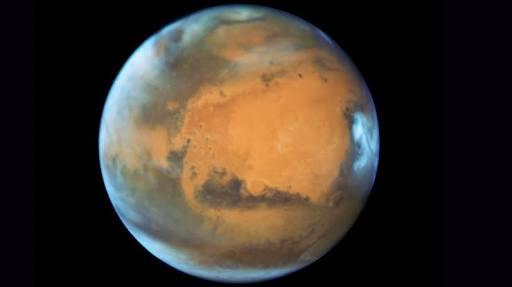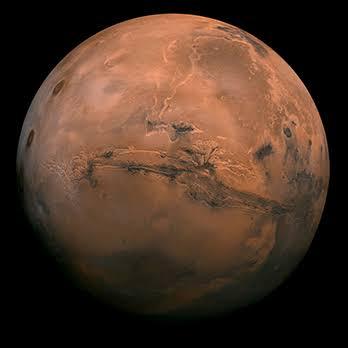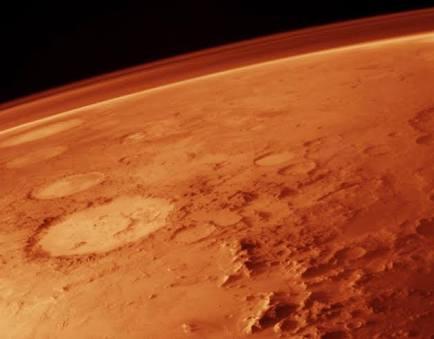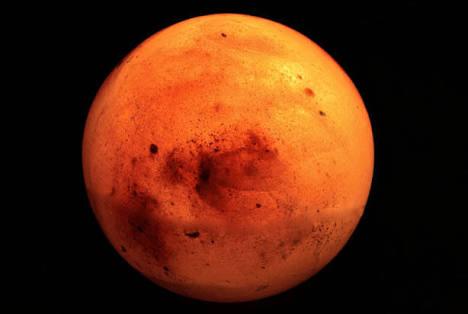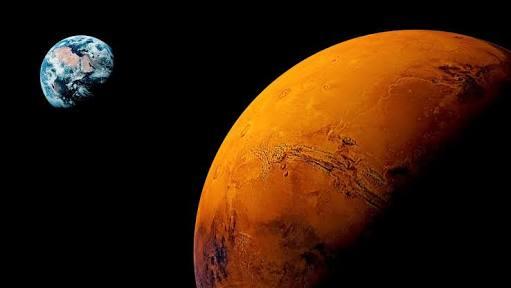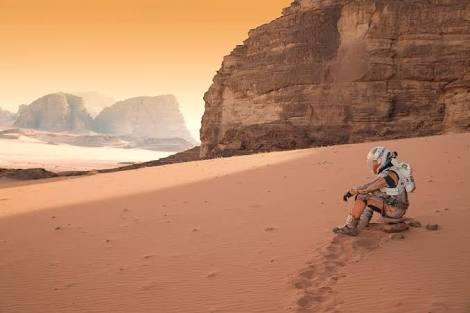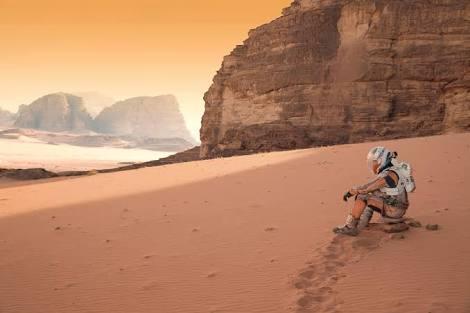What Do You Know About Mars?

Mars, the fourth planet from the sun, second smallest planet in the solar system. It is the second planet that closely seems to accommodate the human species. Try out these quiz and see how much you much.
- 1.
What Is the position of Mars in the solar System?
- A.
1st
- B.
2nd
- C.
3rd
- D.
4th
Correct Answer
D. 4thExplanation
Mars is the fourth planet from the Sun in the solar system.Rate this question:
-
- 2.
What is the Mars planet mostly called?
- A.
The Mysterious Planet
- B.
The Great Planet
- C.
The Red Planet
- D.
The Big Planet
Correct Answer
C. The Red PlanetExplanation
The correct answer is "The Red Planet" because Mars is often referred to as the Red Planet due to its reddish appearance. This is caused by iron oxide (rust) on its surface, giving it a distinct red color.Rate this question:
-
- 3.
The Mars Planet has how many moons?
- A.
1
- B.
2
- C.
3
- D.
4
Correct Answer
B. 2Explanation
The correct answer is 2 because Mars has two moons named Phobos and Deimos. These moons were discovered by American astronomer Asaph Hall in 1877. Phobos is the larger moon, while Deimos is smaller. Both moons are irregularly shaped and are thought to be captured asteroids.Rate this question:
-
- 4.
What is the atmospheric temperature range of Mars?
- A.
Hot
- B.
Cold
- C.
Very hot
- D.
Not too hot or too cold
Correct Answer
D. Not too hot or too coldExplanation
Mars has a wide range of temperatures, but it is not too hot or too cold compared to other celestial bodies. The average temperature on Mars is around -80 degrees Fahrenheit (-62 degrees Celsius), which is extremely cold. However, during the warmest part of the day at the equator, temperatures can reach up to 70 degrees Fahrenheit (20 degrees Celsius). Overall, Mars has a temperature range that is relatively moderate compared to other planets, making it not too hot or too cold.Rate this question:
-
- 5.
What year was Mars discovered?
- A.
1543
- B.
1659
- C.
1770
- D.
1790
Correct Answer
B. 1659Explanation
In 1659, Mars was discovered. This means that before this year, Mars was not known or recognized as a distinct celestial body. The discovery of Mars in 1659 would have been a significant event in the field of astronomy, as it expanded our understanding of the solar system and the planets within it.Rate this question:
-
- 6.
What is Mars distance from the earth?
- A.
76.2 Million kilometers
- B.
66.7 million kilometers
- C.
54.6 million kilometers
- D.
98.0 million kilometers
Correct Answer
C. 54.6 million kilometersExplanation
The correct answer is 54.6 million kilometers. This is the average distance between Mars and Earth when they are at their closest point in their respective orbits around the sun. The distance between the two planets can vary greatly depending on their positions in their orbits, but on average, it is about 54.6 million kilometers.Rate this question:
-
- 7.
How long can it take you to travel to Mars from Earth in light speed?
- A.
16.2 Light minutes
- B.
14.1 Light minutes
- C.
11.8 Light Minutes
- D.
12.5 Light Minutes
Correct Answer
D. 12.5 Light MinutesExplanation
The distance between Earth and Mars varies depending on their positions in their respective orbits. On average, the distance is about 225 million kilometers. Since light travels at a speed of approximately 300,000 kilometers per second, it would take about 12.5 minutes for light to travel from Earth to Mars. Therefore, the correct answer is 12.5 Light Minutes.Rate this question:
-
- 8.
Mars was named after a Roman what?
- A.
King
- B.
Prince
- C.
War god
- D.
Emperor
Correct Answer
C. War godExplanation
Mars was named after a Roman war god. In Roman mythology, Mars was the god of war and was considered one of the most important deities. He was worshipped by the Romans as the protector of soldiers and the state. The planet Mars was named after him because of its reddish appearance, which was associated with bloodshed and warfare. The name Mars symbolizes the planet's association with aggression and conflict, reflecting the Roman war god's attributes.Rate this question:
-
- 9.
How much is Mars’ diameter in comparison with the earth’s diameter?
- A.
Twice the earth’s diameter
- B.
Equal with the earth’s diameter
- C.
Half the earth’s diameter
- D.
Four times the earth’s diameter
Correct Answer
C. Half the earth’s diameterExplanation
Mars' diameter is half the earth's diameter. This means that Mars is smaller than Earth in terms of size.Rate this question:
-
- 10.
Which of these fields is absent in Mars?
- A.
Electric
- B.
Magnetic
- C.
Gravitational
- D.
All of the above
Correct Answer
B. MagneticExplanation
Mars does not have a magnetic field. Unlike Earth, Mars does not have a global magnetic field generated by a dynamo effect in its core. This absence of a magnetic field has significant implications for the planet's atmosphere and potential for supporting life. Without a magnetic field, Mars is more vulnerable to the harsh solar wind, which can strip away its atmosphere over time.Rate this question:
-
Quiz Review Timeline +
Our quizzes are rigorously reviewed, monitored and continuously updated by our expert board to maintain accuracy, relevance, and timeliness.
-
Current Version
-
Mar 20, 2023Quiz Edited by
ProProfs Editorial Team -
Oct 29, 2017Quiz Created by
Jaksiboy
 Back to top
Back to top



